If you read our Construction PPE article, you might remember we promised to go deeper into each category. We’re keeping our word and jumping right in with hard hats. Choosing the best hard hat might be as simple as making your way to the crib manager to grab one. If you’re picking one up on your own, we have some details to help you make the right choice.
Editor’s Note: Check out our article on the coolest and most comfortable hard hats to see our top recommendations!
Choosing the Best Hard Hat
Why Do I Need a Hard Hat?

Head injuries are no joke and there are a million ways to ring your bell in construction. While it’s common sense to protect your body’s source of all command functions, there are also regulations from OSHA that require it.
OSHA Standards and Certification
General Industry: 1910.135
- “The employer shall ensure that each affected employee wears a protective helmet when working in areas where there is a potential for injury to the head from falling objects.”
Construction Industry: 1926.100
- “Employees working in areas where there is a possible danger of head injury from impact, or from falling or flying objects, or from electrical shock and burns, shall be protected by protective helmets.”
In general, you’re looking for a hard hat that has an “ANSI/ISEA Z89-1-2014” certification marking on it. If it’s not there, it’s not jobsite-certified. -1997, -2003, and -2009 are all acceptable.
The Best Hard Hat Type Depends on Your Risk Direction
There are two main types of hard hats. Type 1 reduces the force of impact to the top of your head. Type 2 reduces the force to the top or sides of your head.

Choosing the best hard hat type is all about identifying where the risk is.
If your only risk is an object falling on top of your head, Type 1 gets the job done. If it’s a combination of falling objects along with flying and/or running into objects from the side, you need Type 2.
As a general rule, I always carry a Type 2 hard hat to cover my noggin no matter what jobsite I might visit.
Best Hard Hat Class for Electrical Risk
There are three major classes of hard hats we run into frequently (I guess that would require Type 2 protection since we run into it!).
Class C hard hats are considered conductive. They’re not necessarily made from a conductive material, though. Vented hard hats offer a pathway from electricity or wires to contact your head, so they’re not effective against electrical hazards.
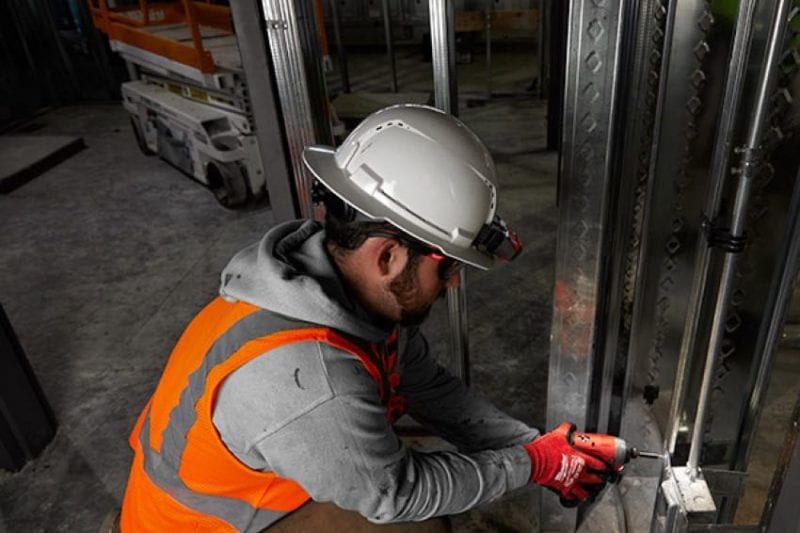
Class G hard hats are your “general use” hard hats. They reduce the risk of contact with low voltage conductors and are proof-tested to 2,200 volts. However, they’re not actually rated to protect you against that high of a voltage.
Class E hard hats are the standard for electrical work. They are proof tested to 20,000 volts and reduce the risk of injury in higher voltage environments.
Best Hard Hat Style – Personal Protective Preference
The best hard hat is one that lets you come home safely, but there’s some personal preference that comes into play as well. One of the major style differences is full brim versus front brim (cap style).
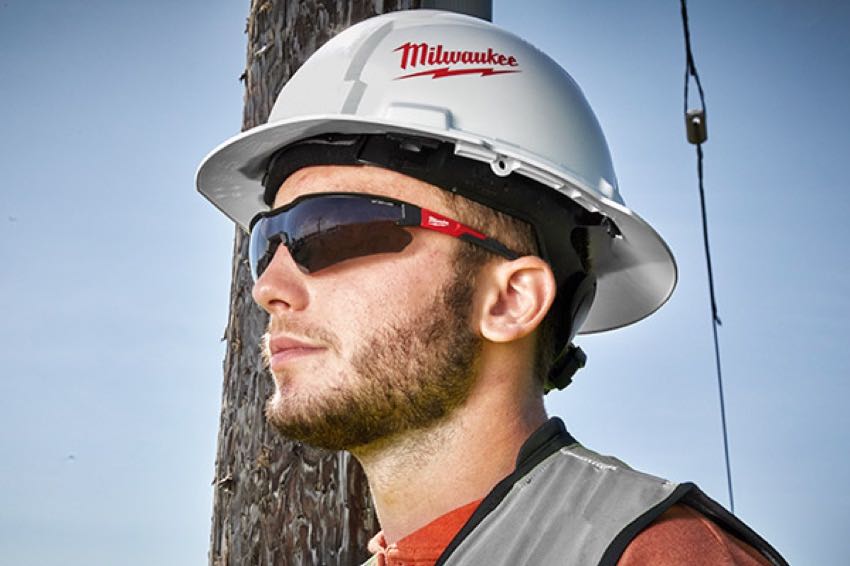
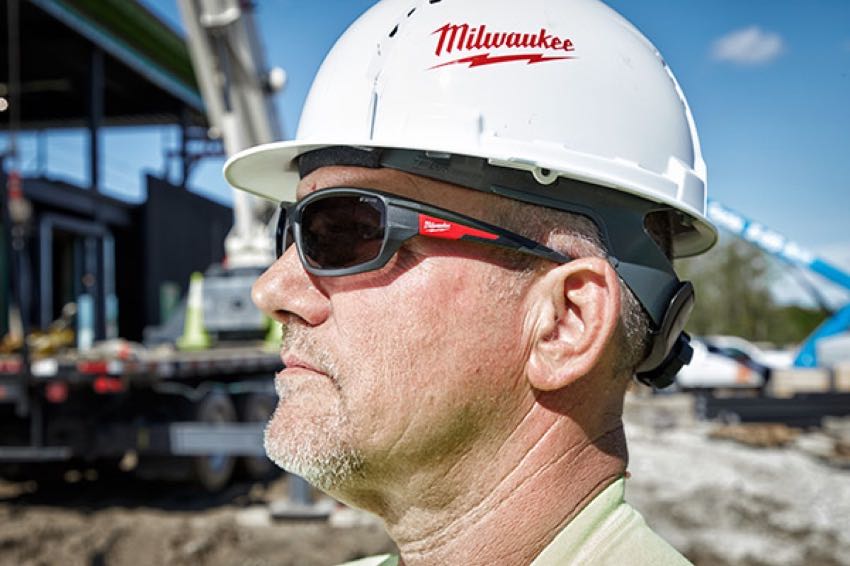
Front brim hard hats (sometimes called cap style) offer some additional shade to your eyes and are especially helpful if you don’t have shaded safety glasses for outdoor work. They’re slightly lighter than full brim since they use less material.
Full brim hard hats are the go-to choice when you’re working in confined spaces and also offer additional protection against falling objects and the sun. There’s really no environment where they’re inappropriate if you don’t mind the slightly higher weight.
Bonus Features
When you’re on the hunt for the best hard hat, take a look at the suspension system. It’s what lets the hard hat “float” on your head. Some have sweat-wicking pads that can make the summer months a little more comfortable.
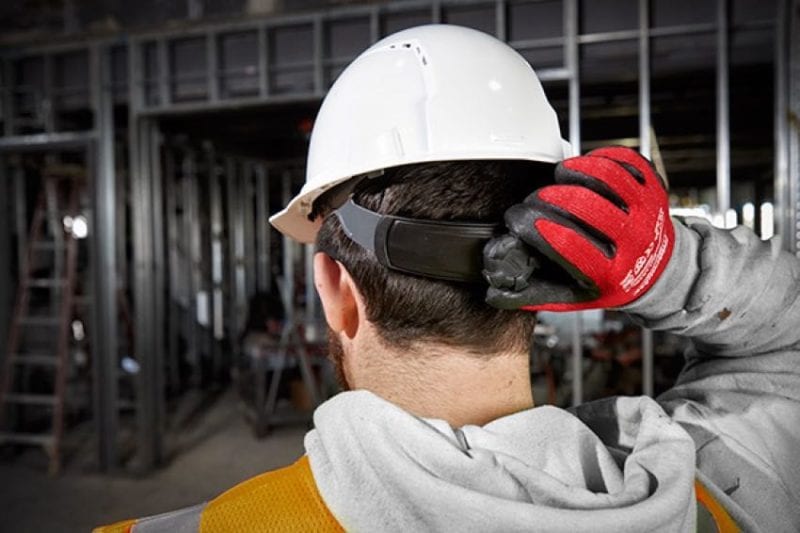
Also, take a look at the adjustment system. Many hard hats use a ratcheting dial that makes it simple to customize to your head. Without taking your hard hat off, you can just reach back and tighten it up or loosen it to your comfort level.
Milwaukee’s hard hats with the Bolt Accessory System take things a step further. You can integrate a face shield or hearing protection with lighting. They have a Reversible Headlamp Mount that eliminates the need for using a strap completely and each hard hat includes a Bolt Marker Clip to keep your Inkzall close at hand, er, head.


Learn more about Milwaukee hard hats here or check out the line at Acme Tools:
- 48-73-1000 Type 1, Class C Front Brim Vented: $19.99
- 48-73-1001 Type 1, Class C Front Brim Vented (Small Logo): $19.99
- 48-73-1010 Type 1, Class C Full Brim Vented: $24.99
- 48-73-1011 Type 1, Class C Full Brim Vented (Small Logo): $24.99
- 48-73-1020 Type 1, Class E Front Brim Non-Vented: $19.99
- 48-73-1021 Type 1, Class E Front Brim Non-Vented (Small Logo): $19.99
- 48-73-1030 Type 1, Class E Full Brim Non-Vented: $24.99
- 48-73-1031 Type 1, Class E Full Brim Non-Vented (Small Logo): $24.99
What is your go-to hard hat? Tell us what you wear on the job in the comments below!


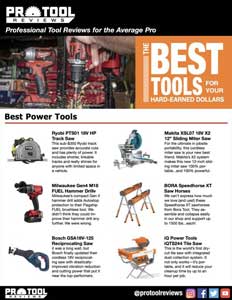


What about hearing protection to go along with these?
Any available to clip onto the sides?
From Milwaukee …?
If they don’t have it … what about competitors? … since you’re talking about “ best “ … mine would have full brim, a fold down vizor, clip on ear muffs and a forward flashlight.
But, no mention of that …